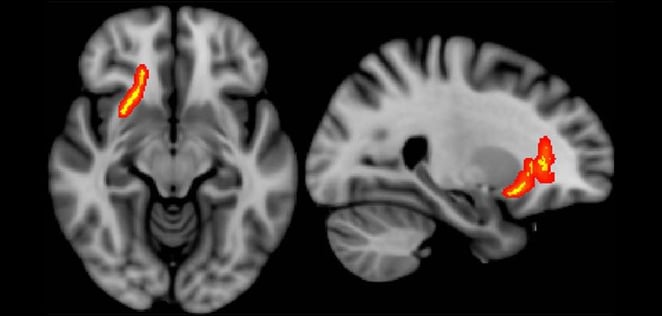
Brain MRI can be an invaluable tool for the diagnosis and monitoring of a variety of conditions. However, some patients find it extremely difficult to successfully complete the procedure. That’s because MRI can involve extended periods in a confined space, and it requires patients to remain still while images are being taken. Children (especially those who are very young), patients who are claustrophobic or anxious in small spaces, those who are in pain, or who experience involuntary movements like tremors or tics may be unable to remain still long enough to complete the exam. In these cases, sedatives or even general anesthesia may be prescribed so a patient can undergo the procedure.
Why are brain MRIs used?
MRI of the brain produces clearer, more detailed images than other technologies. While CT scans are also important for brain imaging, they are less able to visualize details within organs and tissues than MRI. As a result, MRI is an important part of diagnosing conditions like tumors, inflammation, and internal bleeding, and it can allow doctors to detect signs of stroke within as little as 30 minutes from onset. Brain MRI is also frequently used to diagnose issues such as
- Multiple sclerosis
- Infections
- Eye and inner ear disorders
- Vascular problems such as aneurysm or thrombosis
- Pituitary gland disorders
- Causes of seizures
- Hydrocephalus
- Developmental anomalies
If your doctor has ordered a brain MRI, it’s because the procedure can reveal medical information that is important for your care. If an MRI will be difficult for you to complete, talk about this with your doctor. There are several steps that can be taken to increase your comfort and ability to complete the exam.
What can I expect during a brain MRI?
MRI exams are performed on an outpatient basis. After you arrive at the imaging center, a technologist will take a brief medical history. Because of the strong magnetic field produced by the MRI machine, you’ll need to remove all jewelry (and anything else that contains metal) and change into a gown. If contrast dye is being used, it will be injected into a vein in your arm while you’re lying on the exam table. Straps and bolsters may be used to help you comfortably maintain needed positions. The table will slide into the scanning area, and the technologist will leave the room. However, they will still be able to see and hear you.
While taking images, the MRI machine makes a rapid tapping noise. It’s important to remain a still as possible during this process. A brain MRI without contrast typically takes 30–60 minutes. If contrast is being used, plan for the exam to take approximately 15 minutes longer. In some cases, the radiologist may also perform MR spectroscopy, which can extend the exam by an additional 15 minutes. MR spectroscopy provides information about the chemical composition of tissues that can help shed light on disease processes.
Will I need sedation for my brain MRI?
Patients who are unable to remain still often need sedation or anesthesia to complete an MRI exam. In some cases, sedation is also useful for patients who suffer from anxiety or claustrophobia. However, other steps can also be taken to make the exam more comfortable. If you’re feeling anxious about your MRI, talk to your doctor and your chosen imaging center about your options. Below are some measures that could help.
- Not all MRI machines are equally confining. Wide-bore MRI features a 20% larger opening and a shorter core than closed-bore machines, helping to prevent claustrophobia in some patients. Wide-bore MRI is also significantly quieter and facilitates quicker exam times.
- Some facilities may allow you to listen to music during an MRI, providing a pleasant distraction and helping to drown out the noise of the machine.
- Mirrors are sometimes used to provide a view of the outside of the machine, reducing the feeling of confinement.
- Breathing, grounding, and meditative techniques can be powerful tools for managing fear and anxiety.
- You may be able to have a friend or family member accompany you in the exam room. Ask your imaging provider ahead of time if they can accommodate this request. If so, your companion will also need to remove all metal jewelry and clothing before entering.
If sedation is needed…
If you and your doctor decide together that sedation is needed, you’ll likely be given a prescription for an oral benzodiazepine, such as Xanax, Ativan, or Valium, to fill before your imaging appointment. Alternatively, your doctor may order IV sedation or general anesthesia, which may require you to undergo the exam at a hospital. If you take any of these medications, you will need to arrange a safe ride home from your appointment.
MRI at Iowa Radiology
At Iowa Radiology, we strive to ensure our patients receive the very best care and are as comfortable as possible during their time with us. We provide blankets and music headsets and offer wide-bore MRI exams. Updated protocols allow us to complete most MRI exams in just 20–25 minutes. Results are typically delivered to the referring doctor within one to two days, including a signed report with interpretation of results. To learn more about MRI exams, see our free ebooks.
Resources
Cedars-Sinai. MR Spectroscopy. Cedars-Sinai.org. Published May 18, 2010. Accessed June 14, 2023. https://www.cedars-sinai.org/programs/imaging-center/med-pros/neuroradiology/mr-spectroscopy.html
Radiological Society of North America. Head MRI. Radiologyinfo.org. Reviewed May 1, 2023. Accessed June 14, 2023. https://www.radiologyinfo.org/en/info/headmr.
Ugan R, White MJ, Wilson SR. Anaesthesia for magnetic resonance imaging. Cont Educ Anaesth Crit Care Pain. 2012;12(3):140–144. https://doi.org/10.1093/bjaceaccp/mks002.



